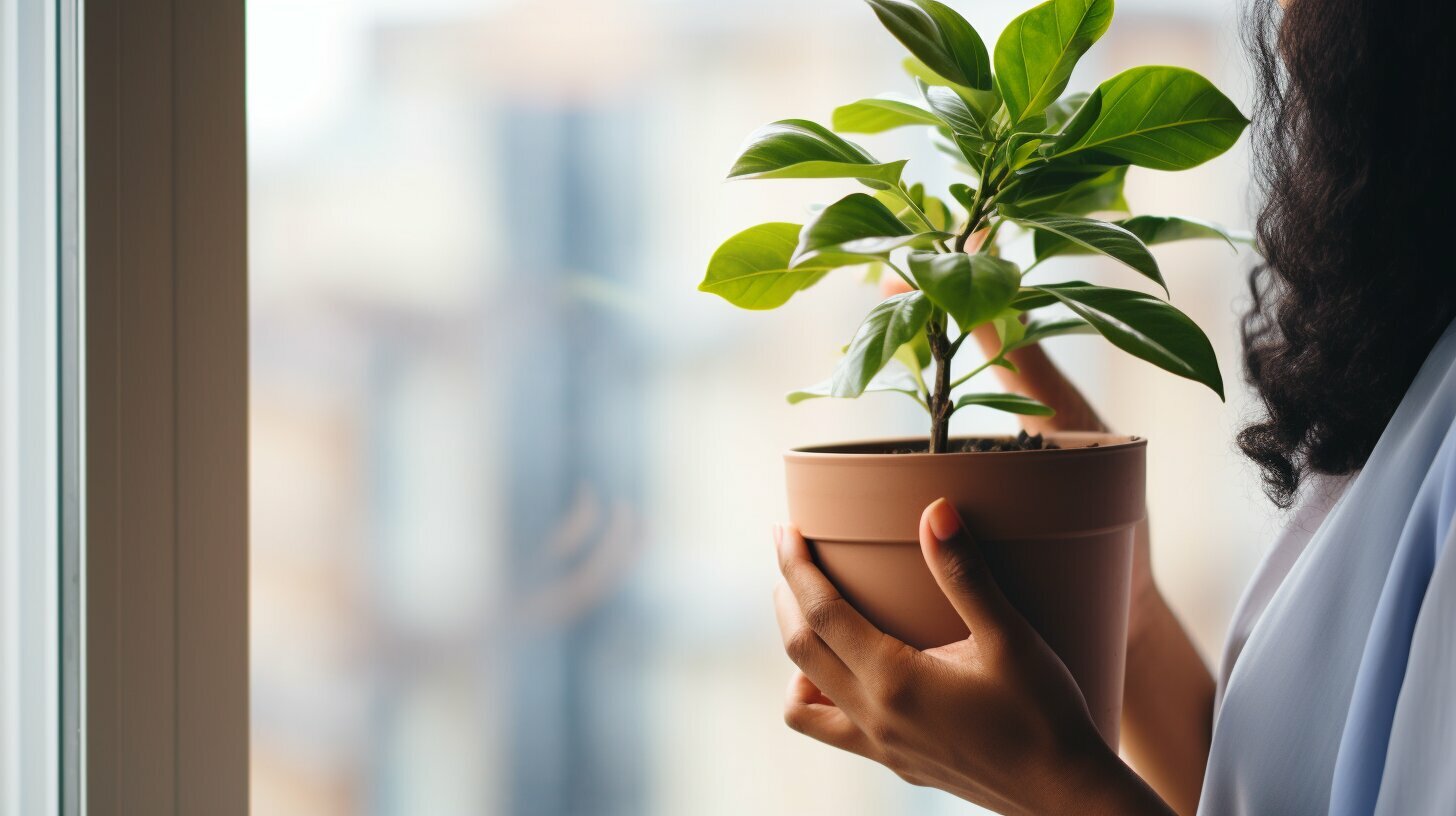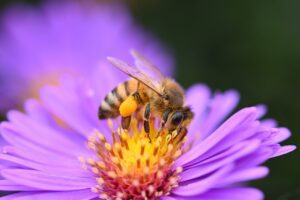Plant Uses for Air Purification. Do you ever feel like the air in your home is stuffy and stale? Or worry about harmful toxins and pollutants lurking in the air you breathe? Fortunately, nature has a solution!
Plants have long been known for their air-purifying properties, improving indoor air quality and creating a cleaner and fresher living space. By absorbing harmful compounds through their leaves and roots, and breaking down pollutants into harmless substances, plants serve as natural air purifiers.
Key Takeaways:
- Plants can naturally purify the air in our homes, creating a fresher living environment.
- Plants absorb harmful compounds through their leaves and roots, breaking down pollutants into harmless substances.
- Air-purifying plants can remove common indoor pollutants such as formaldehyde, benzene, and trichloroethylene.
- Choosing the right plants for your indoor space requires consideration of lighting conditions and maintenance requirements.
- Improved indoor air quality provides numerous health benefits, including reduced respiratory issues and enhanced overall well-being.
How Plants Improve Indoor Air Quality
Plants have been shown to be an effective way of purifying indoor air, creating a cleaner and healthier living environment. By absorbing toxins and pollutants through their leaves and roots, certain plants have the ability to naturally cleanse the air, acting as a plant-based air cleaning system.
Research has confirmed that plants can play a vital role in reducing levels of indoor air pollution, which can be harmful to our health. Studies have shown that plants can remove harmful compounds such as formaldehyde, benzene, and trichloroethylene, which are commonly found in indoor environments.
Best Plants for Purifying Air
While most plants will provide some level of air-purifying benefits, there are some plants that are more effective than others. Some of the best plants for purifying air include:
| Plant Name | Purifying Properties |
|---|---|
| Snake Plant | Removes formaldehyde and benzene |
| Spider Plant | Reduces levels of formaldehyde and xylene |
| Peace Lily | Removes formaldehyde, benzene, and trichloroethylene |
| Bamboo Palm | Effective in removing formaldehyde, benzene, and trichloroethylene |
These plants are not only effective in purifying the air, but they are also low-maintenance and easy to care for, making them ideal for any indoor space.
In conclusion, a plant-based air cleaning system is an effective and natural way to improve indoor air quality. By selecting the right plants for your indoor space, you can enjoy cleaner and fresher air while beautifying your living environment.
The Science Behind Plant Air Purification
Plants are well known for their ability to naturally purify the air by absorbing harmful compounds through their leaves and roots. The process by which they do so is called phytoremediation. This is the ability of certain plants to remove toxins and pollutants from the environment.
Phytoremediation works by utilizing an array of metabolic processes that break down harmful substances into more benign ones. During this process, toxins are absorbed through the root system and then translocated through the plant, ultimately being metabolized and broken down into harmless byproducts.
This process is highly effective in removing common indoor pollutants such as formaldehyde, benzene, and trichloroethylene, which are often found in household cleaners, furniture, and building materials. By utilizing the power of plant air purification, one can significantly improve the air quality in their home, leading to a healthier living environment.
Moreover, studies have shown that plants are able to produce clean air by removing carbon dioxide from the air and releasing oxygen as a byproduct. This can lead to a more positive overall mood and increased productivity levels. In addition, the natural air filtration provided by plants can also reduce the number of airborne dust particles, leading to a cleaner and fresher atmosphere.
Air-Purifying Plants: A Closer Look
When it comes to choosing the best plants for purifying the air in your home, there are many options to consider. Here, we’ll take a closer look at some of the top air-purifying plants that are known for their ability to remove toxins and pollutants from the air, leaving you with cleaner, fresher air to breathe.
The Spider Plant
The spider plant is a popular choice for improving indoor air quality. Not only is it easy to care for, but it also effectively removes harmful pollutants such as formaldehyde and benzene from the air. In addition, it’s safe for pets and children.
The Peace Lily
The peace lily is another excellent choice for purifying the air in your home. It’s known for its ability to remove toxins such as ammonia, benzene, and formaldehyde from the air. Plus, it has a beautiful, elegant appearance that can enhance the decor of any room.
The Boston Fern
The Boston fern is a classic houseplant that not only looks great but also works hard to purify the air. It’s known for its ability to remove pollutants such as formaldehyde and xylene from the air, making it a great addition to any home.
The Rubber Plant
If you’re looking for a low-maintenance plant that can help purify the air in your home, the rubber plant is a great choice. It’s effective at removing formaldehyde from the air and is also a great option for adding a touch of greenery to your decor.
The Snake Plant
The snake plant is another popular choice for improving indoor air quality. It’s known for its ability to remove toxins such as benzene, formaldehyde, and trichloroethylene from the air. Plus, it’s easy to care for and can thrive even in low-light conditions.
These air-purifying plants are just a few examples of the many plants that can help improve the air quality in your home. By selecting the right plants and taking good care of them, you can enjoy cleaner, fresher air and a healthier living environment.
Creating a Green Oasis: Choosing the Right Plants
When it comes to selecting indoor plants for better air, it’s important to consider a variety of factors to ensure that the plant you choose is the right fit for your space.
Lighting Conditions
Indoor plants require different degrees of light exposure to grow and thrive. Some plants require direct sunlight, while others prefer indirect or low light. Determine the amount of light available in your space and choose a plant that is suited to those conditions.
Maintenance Requirements
Consider the amount of care that you are willing to provide for your plant. Some plants require frequent watering, while others thrive in dry conditions. Take into account the time and effort that you are willing to invest in caring for your plants and choose accordingly.
Specific Plants for Different Rooms
Some plants are better suited for certain rooms in the house than others. For example, ferns and spider plants are great choices for bathrooms, while peace lilies and snake plants are ideal for bedrooms.
Plants That Improve Indoor Air Quality
When selecting indoor plants, consider their air-purifying properties. Some plants are especially effective in removing pollutants from the air, such as the snake plant, spider plant, peace lily, and Boston fern.
By following these guidelines, you can select the perfect indoor plant that not only adds beauty to your living environment but also improves the air quality in your home.
Caring for Air-Purifying Plants
Now that you’ve chosen your air-purifying plants, it’s important to understand how to care for them. Proper care is vital to ensuring your plants thrive and effectively remove pollutants from the air.
Watering: Most indoor plants prefer consistent moisture, but overwatering can be detrimental. Check the soil moisture regularly and only water when the top inch of soil feels dry. Avoid letting the plants sit in standing water, as this can cause root rot.
Sunlight: Most air-purifying plants require bright, indirect light. Place your plants near a window that receives bright light, but avoid direct sunlight which can scorch the leaves.
Soil: Use a high-quality potting mix that’s well-aerated and drains well. Avoid using garden soil, which can be too heavy and not provide adequate drainage.
Humidity: Many air-purifying plants thrive in humid environments. Consider using a humidifier or placing a tray of water near the plants to increase humidity levels.
Pruning: Regular pruning is important to keep your plants healthy and looking their best. Trim any dead or yellowing leaves, as they may attract pests or harbor disease.
Pests: Keep an eye out for common indoor plant pests such as spider mites, mealybugs, and scale insects. Use an organic insecticidal soap or neem oil to control infestations.
By following these simple care tips, you can help your air-purifying plants thrive and effectively clean the air in your home.
Styling with Greenery: Incorporating Plants into Interior Design
Adding indoor plants is an excellent way to create a healthier and more attractive living environment. The benefits of greenery for air purification are abundant, but the aesthetic value of plants should not be underestimated. Here are some ideas for incorporating air-purifying plants into your interior design:
- Hang indoor plants from the ceiling or place them on shelves to add a touch of greenery to any room.
- Create a living wall by arranging several plants in a decorative pattern on a vertical surface.
- Use large plants as natural room dividers to separate living spaces in an open-plan layout.
- Cluster several small planters together to create a low-maintenance indoor garden.
- Choose statement plants, such as fiddle-leaf figs, monstera deliciosas, or bamboo palms, to create a bold focal point in any living space.
Indoor plants for better air can complement any interior design style, from minimalistic to bohemian. By incorporating greenery into your home, you can reap the benefits of better air quality while creating a calming and inviting atmosphere.
Natural Air Purification: Beyond Plants
While plants are excellent natural air purifiers, there are also other ways to improve indoor air quality.
Ventilation: Proper ventilation is key to maintaining good air quality. Open windows and use exhaust fans to circulate fresh air throughout your home.
Air-Cleaning Technologies: Consider investing in an air purifier that uses HEPA filters to remove pollutants from the air. These devices can effectively remove allergens, dust, and other particles from the air.
Natural Materials: Opt for natural cleaning and decorating materials to minimize exposure to toxins. Look for natural cleaners and use materials such as bamboo, cork, and wool instead of synthetic options.
Incorporating these methods along with air-purifying plants can provide a holistic approach to improving indoor air quality.
Health Benefits of Cleaner Air
Plants not only enhance the aesthetic appeal of indoor spaces, but they also provide numerous health benefits. One of the most significant benefits of using plants for air purification is the improvement of indoor air quality.
When plants absorb harmful compounds from the air, they release oxygen and water vapor back into the environment. This process not only removes pollutants from the air but also increases the humidity levels, which can be beneficial for those suffering from respiratory issues such as asthma.
Cleaner air can also reduce allergies and other respiratory issues such as coughing, wheezing, and shortness of breath. Plants can help remove common indoor air pollutants such as formaldehyde, benzene, and trichloroethylene, which can cause irritation and discomfort to those exposed to them.
By improving indoor air quality, plants can also enhance overall well-being. Poor air quality has been linked to lethargy, headaches, and other health issues. By reducing pollutants in the air, plants can create a healthier and more productive living environment.
In summary, incorporating air-purifying plants into indoor spaces can have numerous health benefits, including improved indoor air quality, reduced allergies and respiratory discomfort, and enhanced overall well-being.
Conclusion
In conclusion, incorporating plants into your indoor environment is not only aesthetically pleasing but offers numerous benefits to your health and well-being. By using plants as natural air purifiers, you can create a cleaner and fresher living space.
Through our exploration of the science behind plant air purification, the benefits of cleaner air, and the best air-purifying plants, we hope to have provided you with valuable insights to enhance your indoor environment.
Remember to choose the right plants for your living space and provide proper care to ensure their optimal growth and air-purifying capabilities. By doing so, you can create a green oasis that not only looks beautiful but also promotes a healthier and happier lifestyle.
FAQ
Can plants really improve indoor air quality?
Yes! Plants have the ability to remove toxins and pollutants from the air, making it cleaner and fresher.
How do plants purify the air?
Plants absorb harmful compounds through their leaves and roots, breaking them down into harmless substances.
What are some air-purifying plants?
Some common air-purifying plants include the snake plant, peace lily, spider plant, and aloe vera.
How do I choose the right plants for air purification?
Consider factors such as lighting conditions, maintenance requirements, and specific plants suitable for different rooms in your home.
How do I care for air-purifying plants?
Provide adequate watering, sunlight exposure, and the right soil requirements. Be aware of potential challenges that may arise when growing these plants indoors.
How can I incorporate air-purifying plants into my interior design?
You can arrange and display plants in various living spaces to enhance aesthetic value along with their air-purifying benefits.
Are there other natural air purification methods?
Yes, proper ventilation, air-cleaning technologies, and using natural materials can complement the use of plants for air purification.
What are the health benefits of cleaner air?
Cleaner air can reduce allergies, respiratory issues, and enhance overall well-being.





Pingback: Explore Plant Uses for Medicine: A Natural Health Guide
Pingback: Discover the Intriguing World of Tropical Plant Species
Pingback: Exploring Various Plant Uses for Tea: A Refreshing Guide
Pingback: Discover the Unique Plant Uses for Decoration in Your Home
Pingback: Discover What Plants are Safe for Cats: A Comprehensive Guide - Botanic Plant Life